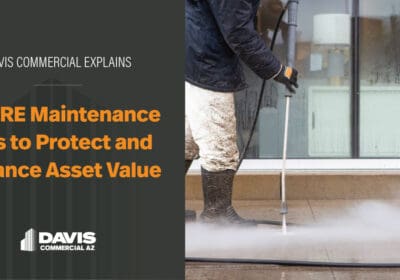Behind the Deal: A Cautionary CRE Tale Part 2

In Part 1 of “Behind the Deal,” we met tenant CJ and the landlords — brothers Mark and Tom — as they rushed to finalize a lease on an 8,000-square-foot, two-story freestanding building. The tenant improvement (TI) work needed on the first floor was extensive, and eager to open his swingers’ club, CJ agreed to all terms without hesitation. The location boasted a prime spot on a busy street, complete with a large monument sign. It was an ideal spot for CJ’s expanding business.
The landlords’ brokers, Lisa and James, were cautiously optimistic. They tapped the brakes throughout the deal to protect their client in case of default. It seemed like a win-win, but was it?
We also learned in Part 1 that CJ’s personal and business financials fell short of the million-dollar lease obligation. To protect their client, the brokers advised the landlords require a second personal guarantor. A woman named Laura agreed to sign on, agreeing to take on full financial responsibility in case of CJ’s default. With the lease fully executed, CJ launched the buildout.
No permit, no progress
CJ’s original contractor wasn’t licensed. The brokers and landlords immediately put a stop to it, demanding proper credentials. CJ responded by hiring a new contractor and emailing over the required license and bond documentation. When Mark asked for proof of insurance, CJ complied. Mark even called the contractor’s office to verify legitimacy, and all seemed well.
While Mark and Tom were out of the country, CJ decided that building permits were too much of a hassle. He began interior demolition without their consent. Once again, the landlords halted progress. CJ promised a permit, and the buildout resumed.
A month later, Lisa, the landlord’s broker, received a panicked call. It was Laura, the financial backer. She was confused and frustrated. She had already contributed nearly $500,000 toward the renovation but found that only demolition had been completed. She called Lisa for clarity, assuming Arizona’s TI process must differ from her home state of Florida.
James, who worked with Lisa, paced behind her desk, orange stress ball in hand, ready to chime in.
“Well,” Lisa began, “I can’t speak to how the money’s been handled between CJ, you and the contractor, but I can explain how TIs work here.”
“Please do,” Laura said.
Lisa leaned into the speakerphone, “The lease requires CJ to use a licensed and bonded contractor — he’s covered there. But the demolition started without city permits, which paused everything. Now, to move forward, the contractor must submit a full architectural plan set to the city. That process can take four to six weeks. Once approved, inspections are required for framing, plumbing, electrical, and mechanical systems. Realistically, you’re looking at a three- to five-month timeline before opening.”
“And I have to pay rent during this time?” Laura asked.
James raised an eyebrow at Lisa and shrugged. Lisa replied gently, “Unfortunately, yes. The free rent period has expired. According to the signed lease, rent for this month is already due.”
Laura’s frustration grew, “So we can’t open for three to five months, and we still have to pay rent? That doesn’t seem fair.”
“I understand how you feel. However, CJ signed a legally binding lease. He told us he’d be open in two months. That’s why he accepted the lease terms of three months’ rent abatement. That period has expired.”
“I’d like to speak with the landlord to see if we can extend the rent abatement,” Laura said.
James mouthed silently, “OMG.”
“Of course,” Lisa replied and ended the call.
“Learning moment, James,” she muttered.
The Unraveling
Mark and Tom, the landlords, knew the lease was clear: rent was due on a specific date, and CJ’s business was behind. As the personal guarantor (PG), Laura was on the hook if CJ didn’t pay. They encouraged her to stay current on rent while she sorted things out with CJ. Mark and Tom also made it clear they’d be willing to help with permitting or construction bids.
Everyone decided to meet at the property to form a plan to move forward. CJ didn’t show up. The ground floor was clean, but gutted. As they climbed the stairs, Mark froze in disbelief.
“Oh my gosh! What did he do?” Mark’s voice cracked. “I just renovated the second floor before the lease. We agreed it would stay exactly like it was except for one wall. Where are the restrooms?”
He paced the building, stunned, “What happened to the ceiling tiles? The electrical?”
Lisa turned and walked toward Laura, who had slumped against a dusty wall, visibly unraveling.
“This is a mess,” Laura confessed. “I didn’t even know CJ that well before signing the PG and becoming a 50% partner in his swingers’ club. My husband and I loved the building and thought it would be a hit. We didn’t do our usual vetting. He seemed trustworthy.
“You know him better than we do, but I have a suggestion. If you take over construction, at least the business could open, and you’d easily be profiting enough to pay rent,” said Lisa.
“I don’t know,” Laura said. “He gave 20% of the business to his girlfriend for $50,000 she got in her divorce. He didn’t use any of it for renovations. Between her investment and mine, he’s blown half a million dollars. And she’s got three kids to take care of! I feel awful.”
“We can’t get in the middle of your business structure,” Lisa explained. “But if you take over, you might still salvage this. The location is solid.”
Mark finally spoke, “Someone needs to either pay for my building or open for business.”
They all walked out in silence, with no more of a plan than when they arrived. As Laura drove off, Lisa leaned in and warned Mark, “Don’t let her off the lease. Call your attorney. Figure out your next steps. You need to put the hammer down.”
The blame game begins
Three months after their meeting at the building, James popped into Lisa’s office, “Our favorite client, Mark is on the phone.”
Lisa accepted the call, “Hi Mark.”
“Laura paid two months’ rent and then stopped,” he blurted. “Now what? The building’s a wreck. My brother Tom is livid. The lease partners are fighting. You need to help us. Give us back your commission. You’ve made more than we have!”
Lisa hit mute, looked over at James with his jaw dropped and said, “That money had sailed.”
“Thank God we insisted on attorneys for this lease,” she muttered, then unmuted. “The bigger concern is how are you going to finish construction and get rent paid? What’s your attorney saying?”
“We’re trying,” Mark replied. “But now we have homeless people breaking in. Tom wants to sue everyone — including you.”
“Whoa, what?” Lisa said, trying to stay composed. “You and Tom chose this tenant. We cautioned you on the use and the tenant credentials. You liked the terms. We did our job.”
“I know, I know. But Tom is mad.”
“Understandable. Can you lock CJ out?”
“We’re looking into it. But again, can’t you pay back the commission?”
“No, Mark. We earned our commission per the listing agreement and under state law. If this ends with a new lease or sale, we’ll credit back what you paid to help offset costs, but that’s goodwill, not an obligation.”
Mark hesitated, “Okay. I’ll talk to Tom.”
After he hung up, Lisa turned to James, “What’s the smartest thing we did on this deal?”
James grinned, “Made sure they used an attorney.”
“Right. Still doesn’t mean this won’t be a mess.”
Key takeaways
Two months after the frustrated call from Mark, James and Lisa are in their office. “James!” Lisa called upstairs. “Follow up with Mark. Let’s see what’s going on with the swingers’ club.”
James reached Mark, and the call began civilly enough. Then it turned, “That SOB CJ hasn’t paid rent since we last spoke,” Mark vented. “He’s gone. We’re suing CJ, Laura, the contractor, anyone we can. Laura’s out of the country, and her attorney won’t even respond for two months. My building is ruined!”
“Mark,” Lisa said evenly. “Until you resolve this dispute, we can’t help without jeopardizing your case. What options did you give Laura?”
“We have to send everything certified mail. Otherwise, they claim they never got it. Did you know the city slapped a lien on our building because it’s not up to code now?” Mark was livid. “We gave Laura three options: One, bring the building back to its original state, including code compliance, and pay a cash settlement to walk away; two, honor the lease, finish the buildout and open for business; or three, buy the building for $2.2 million.”
“That’s a first for me,” Lisa muttered. “A lien from the city? CJ really pissed them off.”
Mark didn’t hold back, “That scumbag sold our generator for ten grand and stole everything else inside the building he could get his hands on. This is a total mess.”
James jumped in, ” We’re sorry you’re going through this. No one could’ve predicted this, Mark. Just let us know what you need once they decide your next tenant action, and we’ll jump on it.”
When the call ended, the brokers stood in stunned silence.
“Wow,” Lisa finally said. “Never in my life have I seen such a disaster of a tenant. We knew CJ was sketchy, but this? This is next level.”
She turned to James. “What lessons did you learn from this one?”
James didn’t skip a beat:
- The lease must be airtight and written by a real estate attorney — no shortcuts.
- Brokers must document everything and warn landlords when red flags pop up.
- Landlords should visit the property during renovations and never assume it’s going smoothly.
- Trust your gut; if it feels out of control, it probably is.
- Never release the personal guarantor.
- Be ready to sue. Unfortunately, sometimes it’s the only option.
- Keep reserves. Commercial property ownership often requires a rainy-day fund.
At Davis Commercial AZ, our landlord representation experts understand that securing the right tenant is key to protecting your property and maximizing long-term value. We work closely with our clients to navigate each step of the leasing process with strategy and care. Whether you’re new to commercial leasing or a seasoned investor, our team of experts brings the experience, market insight and industry connections to support your success. Learn more about our services and get in touch with us today.
Related Posts

1031 Tax Deferred Exchanges Explained: Maximizing Returns
As businesses grow and operations evolve, so do their property needs. The need for new…

Retail Versus Office Investments: What Investors Need to Know
Not all commercial real estate properties are created equal. Whether you’re eyeing a retail center…

What new developments are shaping the CRE landscape of Metro Phoenix, AZ?
Metro Phoenix consists of more than 20 municipalities and continues to rank among the fastest-growing…

10 CRE Maintenance Tips to Protect and Enhance Asset Value
Protecting the value of a property in commercial real estate (CRE) is crucial, especially for…
